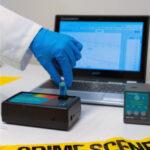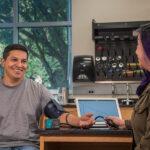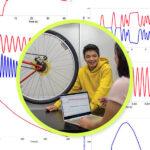
Sharing ideas and inspiration for engagement, inclusion, and excellence in STEM
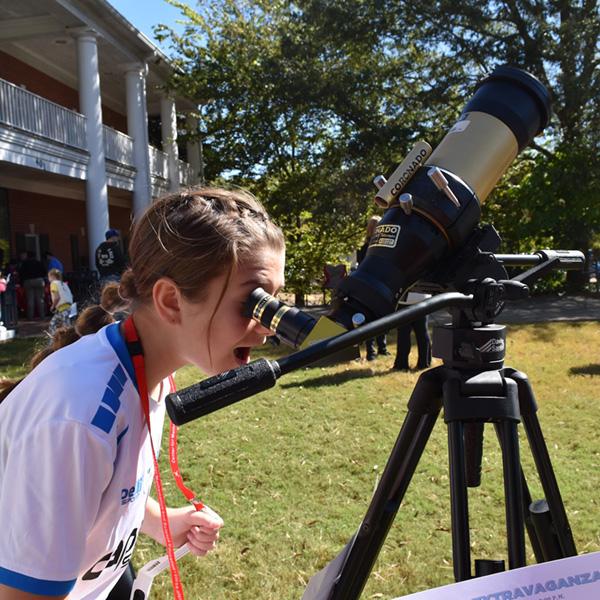
It seems like all the celestial bodies were in alignment on Saturday, October 14, 2023, in Oxford, Mississippi, just in time for the much-anticipated annular solar eclipse. Christian Clark, a graduate research fellow at the Center for Math and Science Education (CMSE) at the University of Mississippi and one of the organizers of the Eclipse Extravaganza event, reflects on their good luck.
“I cannot stress enough how anxious we were all week. It was cloudy and overcast for three days prior, and then we woke up on Saturday and it was sunny. And then as soon as we left at 2:30 from cleaning up at the event, it was overcast again. It was ridiculous.”
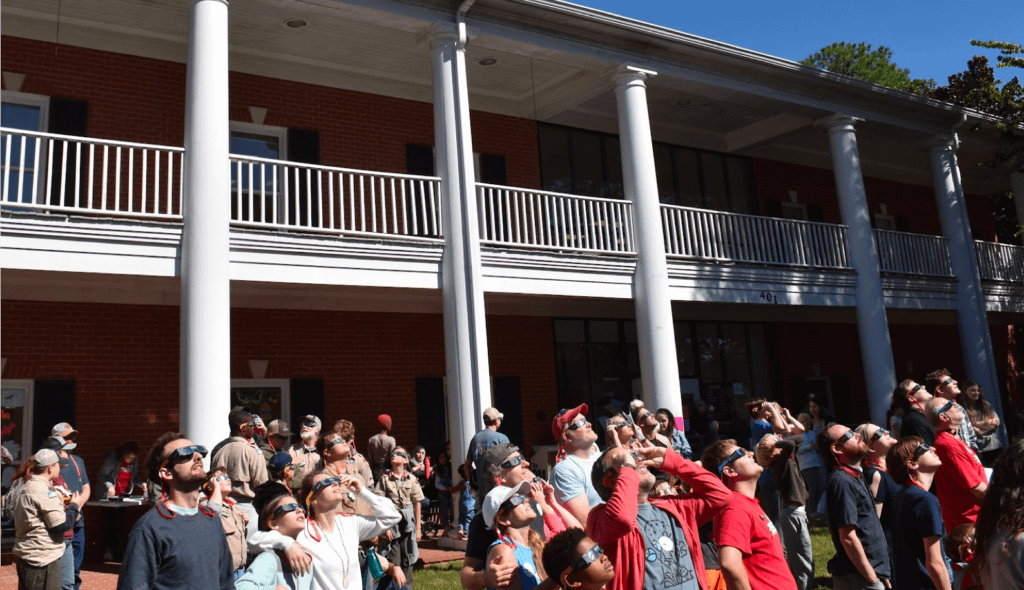
In partnership with the Lafayette County & Oxford Public Library and the National Science Teacher Association (NSTA), organizers at the CMSE planned an entire week of engaging, eclipse-focused science activities for students and families, culminating in a viewing event—the Eclipse Extravaganza—on eclipse day.
Engaging Fifth Graders in Math and Science Explorations During Eclipse Week
The journey toward the Eclipse Extravaganza began with Eclipse Week, a unique educational experience designed to introduce fifth graders to the phenomena behind solar eclipses.
Dr. Alice Steimle, the Director of the CMSE, highlights the initial vision behind the event: “We wanted to bring awareness and promote interest in the eclipse. Plans began in the spring, and we chose to focus on engaging as many fifth graders in our area as we possibly could.” Their goal was to bring age-appropriate educational content that related specifically to the eclipse and moon phases.
During Eclipse Week, fifth graders from local schools were invited to the CMSE, where a series of engaging, standards-aligned science activities awaited them.
Modeling Lunar Phases and Eclipses: Students used a tennis ball and lamp to model lunar phases, illustrating how solar eclipses are formed when the moon obscures the sun. To investigate further, students used a hula hoop to help visualize the moon’s tilted orbit and understand eclipse seasons, a phenomenon where the moon only passes directly between the earth and the sun twice per year.
Exploring the Mobile Planetarium: In a special mobile planetarium program designed specifically for Eclipse Week, students were able to experience the eclipse virtually as they would see it from Oxford, MS, as well as explore what the eclipse would look like if they were viewing the earth from space.
Investigating Magnetism and Sunspots: Students observed sunspots through a solar telescope and then used Vernier magnetic field sensors to explore magnetism and the role it plays in causing sunspots.
Solar System Walk: Students developed an awareness of astronomical scale by walking along a scale model of the inner solar system stretched along a 400-foot-long hallway. As a part of this interactive activity, students were able to mimic eclipsing the sun using models of a tiny 2 mm moon and a 70 cm sun.
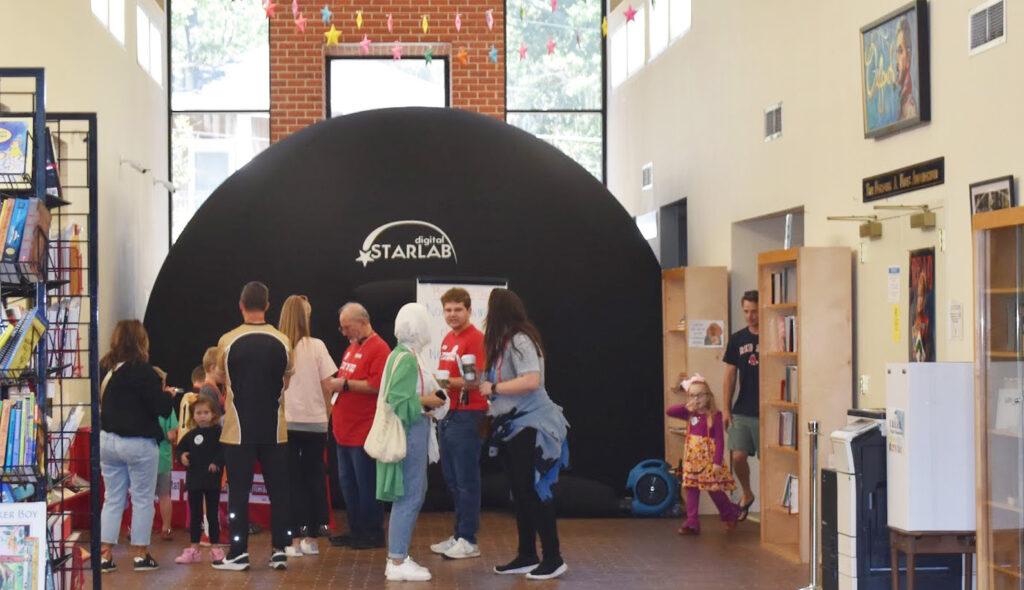
“Engaging in activities such as modeling moon phases, traveling the solar system walk, exploring the eclipse virtually inside the planetarium, and then experiencing that magnetism investigation with the Vernier equipment really built excitement for the eclipse,” Dr. Steimle shares about the event.
“It’s just a really cool experience and brings up a lot of awareness around these kinds of questions for young students: What is an eclipse? What is it going to look like? Why should we wear special solar glasses? What is it about our sun and our Earth and our moon that allows it to happen?”
The excitement of the Eclipse Week spread to parents as well. Children, with model moons in hand, eagerly led their parent chaperones and teachers through the solar system walk, engaging even initially hesitant adults. Dr. Steimle notes, “It’s great to allow parents to get excited again about something that they may not have thought about in a really long time. It’s for everyone. We want to be able to have conversations about the importance of knowing science and the importance of taking part in science.”
Celebrating Eclipse Day by Engaging the Local Community in Scientific Investigations Using Vernier Technology
The pinnacle of this weeklong event was the Eclipse Extravaganza, held at the Lafayette County & Oxford Public Library, where more than 600 educators, students, and families from the community gathered to watch the celestial event and investigate the phenomenon.
The clear weather made for an excellent viewing experience and the CMSE organizers set up various hands-on stations for all attendees to get involved in the science. In addition to the mobile planetarium and solar telescope, several stations were set up for real-time quantitative data investigations around the changing conditions caused by the annular solar eclipse.
Steimle emphasizes the significance of this last-minute addition to their event: “The Vernier activity was one of the last ones added to the agenda, but I think it was one of the most impactful. This engaging activity is one of the ones that we were most proud of for sure.”
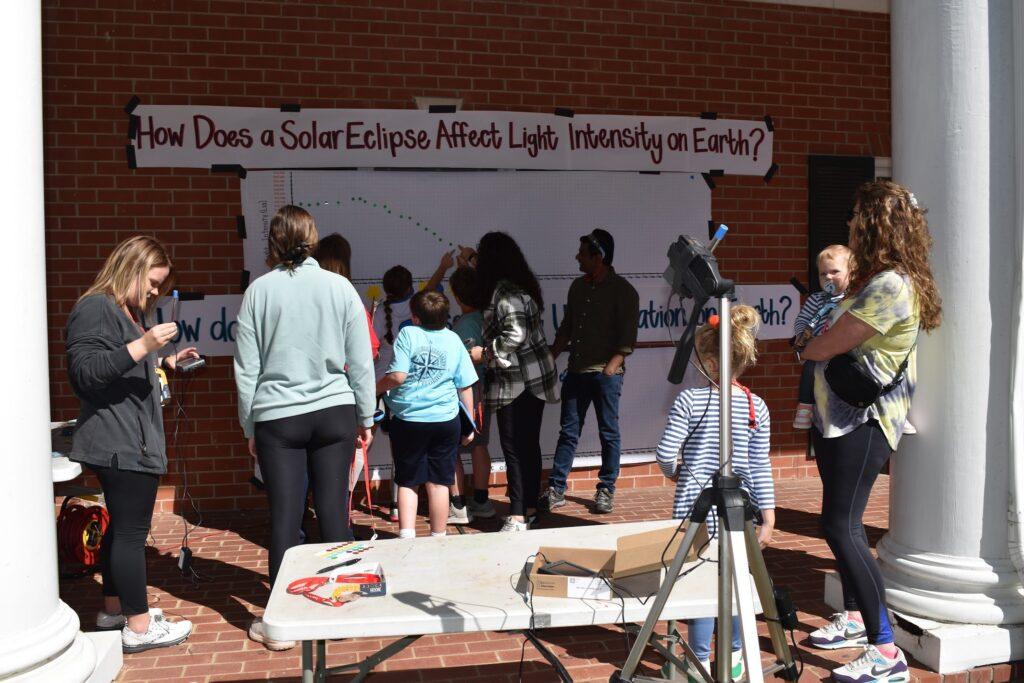
Dr. Bethany LaValley, the Coordinator of Professional Development at the CMSE, helped organize and run the data-collection stations during the event and shared the enthusiasm around the data activities. “We had several kids who brought their parents back to show them their point on the graph,” she laughs. “We had the Vernier sensor stationary on a tripod, but we also had extra sensors that the kids could pick up and hold under the porch and hold under the tree to get an idea of what the sensor is reading.”
Children and adults alike were captivated by the various scientific investigations at the different stations, watching how measurements changed as the eclipse progressed. LaValley shares about one of the kindergarten-aged participants who was very interested in the light intensity graph with the Go Direct® Light and Color Sensor.
“She came and put up several data points, and she really wanted to be the one that put the 12:02 data point on the graph, which was the eclipse maximum … The very next data point was three or four minutes later, and people were standing there waiting to see if it would immediately get brighter. And it did. It immediately started to rise again. It was just a very cool thing for them to be able to see and to measure the phenomenon.”
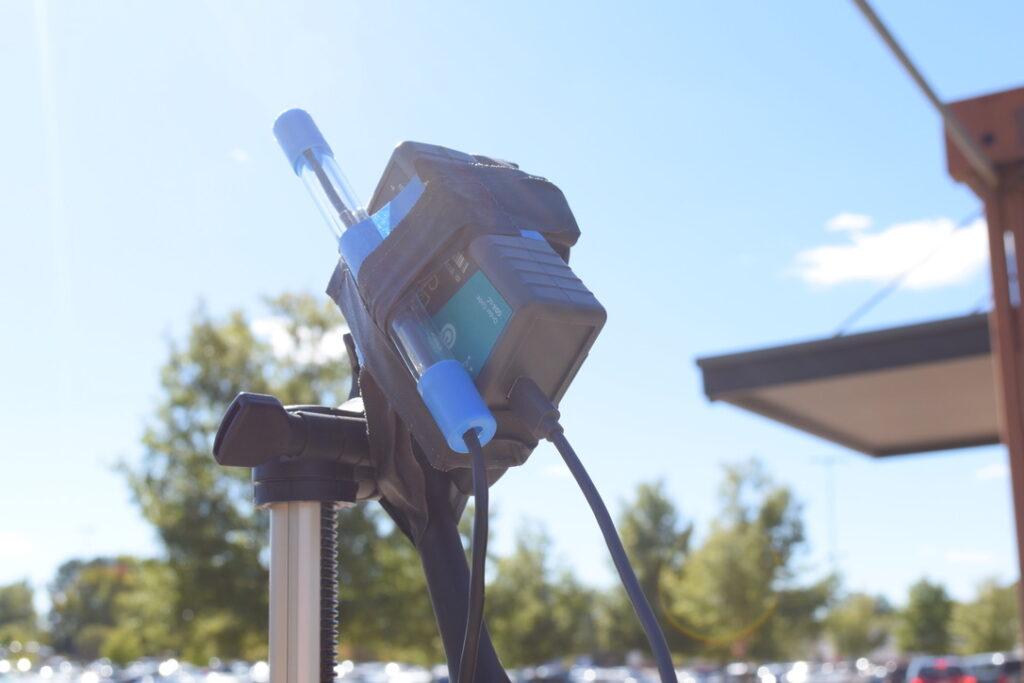
The Vernier sensors sparked significant curiosity among participants, according to LaValley. Students were eager to learn about additional sensors, the types of data they could collect, and whether temperature changes would occur. They were curious about how graphs on a typical day would compare to those during a partial or total eclipse. “It was just really neat to get younger students thinking about all of the different variables that could be affected with the eclipse.”
Clark also highlights how the Eclipse Extravaganza served as a perfect platform to extend NGSS practices beyond the K–12 spectrum. “The graphing activity showcased two major science and engineering practices—Planning and Carrying Out Investigations and Analyzing and Interpreting Data—in this case through visualization and graphs. And it’s just a good example of adults being involved in that too. Not just K–12, but everyone. Science for everyone.”
The real success of the Eclipse Extravaganza lay in the engagement between the public and a sense of scientific curiosity. Families, students, and science enthusiasts alike had the chance to engage with scientific equipment, collect data, and participate in hands-on learning experiences. As Clark aptly puts it, “Getting to see students use the Vernier sensors and technology and see their eyes light up, it’s really special.”
Looking Ahead to the April 2024 Total Solar Eclipse
Anticipation is already building for the total solar eclipse on April 8, 2024. This eclipse will cross North and Central America creating a path of totality, with Oxford experiencing approximately 95% coverage.
The CMSE is gearing up for the Eclipse Extravaganza II at the Lafayette County and Oxford Public Library. This event will offer a similar learning experience to the October Eclipse Extravaganza and as a ‘weekend preview’ to the April 8 eclipse and aims to engage with K-12 students and adults in the local community. The CMSE also plans to engage with University students, staff, and faculty on the day of the solar eclipse.
Discover more about the CMSE eclipse resources and upcoming events here.
Learn more about how the Center for Mathematics and Science Education (CMSE) supports K–12 STEM education. Are you ready for the 2024 total solar eclipse? Explore Vernier eclipse resources.
Share this Article

Sign up for our newsletter
Stay in the loop! Beyond Measure delivers monthly updates on the latest news, ideas, and STEM resources from Vernier.

